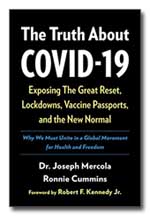 Journal of Allergy and Clinical Immunology, 1975. Sep;56(3): 215-21
Journal of Allergy and Clinical Immunology, 1975. Sep;56(3): 215-21
The authors presented their evidence that in aspirin intolerance there are two mechanisms – one causing bronchospasm (breathing difficulty such as in asthma) and the other causing urticaria (hives).
They also discussed the cross-reaction between aspirin and tartrazine (Yellow 5), and conducted a double-blind study to determine how often this happens. They found that 15% of the 40 aspirin-intolerant subjects reacted to tartrazine, while none of the controls did.
NOTE: The authors estimated (in 1975) that the maximum per capita ingestion of Yellow 5 was 16.3 mg per day; nevertheless, in their own study they used only 0.22 to 0.44 mg — in other words, the most they used was 1/40th the amount they knew may be actually encountered by real people. Even so, 15% of their subjects had reactions!
QUOTE: “The fact that the type of symptom produced by tartrazine was similar to that produced by aspirin may mean that the same type of biochemical abnormality may be present. … However, the molecular structure of tartrazine is vastly different than that of aspirin …”
MedLine || Full Text
Some other older studies on salicylates and dermatitis:
- Paul 1987: Skin reactions to food and food constituents–allergic and pseudoallergic reactions
- Chudwin 1986: Sensitivity to non-acetylated salicylates in a patient with asthma, nasal polyps, and rheumatoid arthritis
- Galland 1986: Increased requirements for essential fatty acids in atopic individuals: A review with clinical descriptions.
- Genton 1985: Value of oral provocation tests to aspirin and food additives in the routine investigation of asthma and chronic urticaria
- Kemp 1985: An elimination diet for chronic urticaria of childhood
- Villaveces 1985: Experience with an elemental diet (Vivonex).
- Guin 1982: Treatment of urticaria
- Illig 1981: Urticaria and “aspirin intolerance” – part of an interdisciplinary pathogenetic principle?
- Gibson 1980: Management of chronic idiopathic urticaria by the identification and exclusion of dietary factors
- Ros 1976: A follow-up study of patients with recurrent urticaria and hypersensitivity to aspirin, benzoates and azo dyes.




















